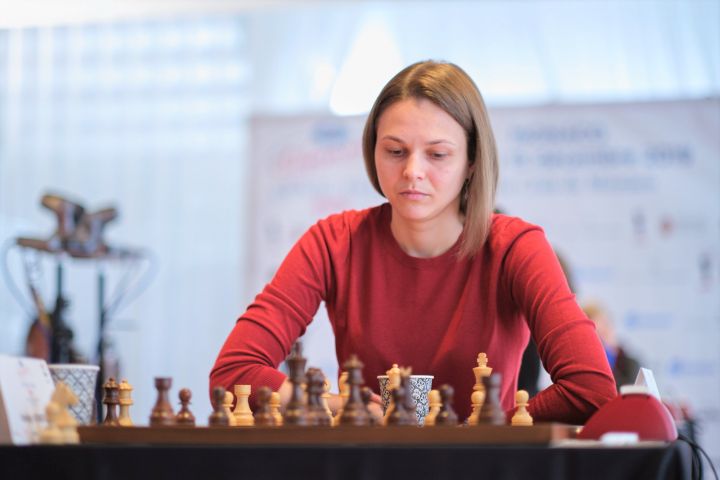


Round two again witnessed four decisive results and only two draws. Former World Rapid and Blitz Champion Anna Muzychuk held Humpy to a draw, however Humpy is still in sole lead by a half point.
Humpy opted for the Petroff Defence and soon after the exchange of queens, the Ukrainian grabbed a pawn and trapped her own bishop which was not possible for Humpy to capture by any means.
Humpy played the obvious move 15...b6 to prevent the bishop's escape. White was forced to play 16.♗a6+ to prevent the bishop from getting captured. After 16...♚d8, white played 17.♗b7
In a post-game interview, press officer Yannick Pelletier asked about having two bishops on a7 and b7, to which Anna said, "I believe it must be good for white as somehow I think that black shouldn't have played like that. I don't know, maybe the critical moment was when I played 18.♖d2. I think a4 was better."
Humpy on the subject of taking the pawn on a7, said:
"I think it seems to be playable because there was no clear way to trap the bishop because of the light squared bishop. At one point I was offering 18.♗c6 ♚e7. That position is like two bishops (against a rook) and white is having one pawn extra on the queenside. I think that's a very interesting position for practical chess. But what happened in the game was like, I don't see much because even if I try to plan something there are certain positions where c4-c5 threats are coming. So I am kind of forced to repeat the moves."
Humpy mentions offering her rook for two bishops after 17...♝d6 18.♗c6 ♚e7.
The game ended up in a draw in 26 moves after both players repeated their bishop's moves.
Anna Muzychuk and Humpy Koneru talk about their game | Video: FIDE

Anna has her eyes on Humpy | Photo: Karol Bartnik / FIDE
Kosteniuk opted for the Queen's Indian Defence but she played the opening too passively which allowed Gunina to move her pieces freely and place them according to her desire.
When she was asked about her win, Gunina said, "I wasn't sure about my game, but I really liked my attack 17.♖h3, so I am satisfied."
It is evident that white has decisive advantage here, find out the best continuation for white.
This DVD is packed full of new, exciting and novel ideas; based on a repertoire starting with the moves 1 d4 Nf6 2 c4 e6 3 Nf3 with g3! to follow.
Gunina talks about her victory | Video: FIDE
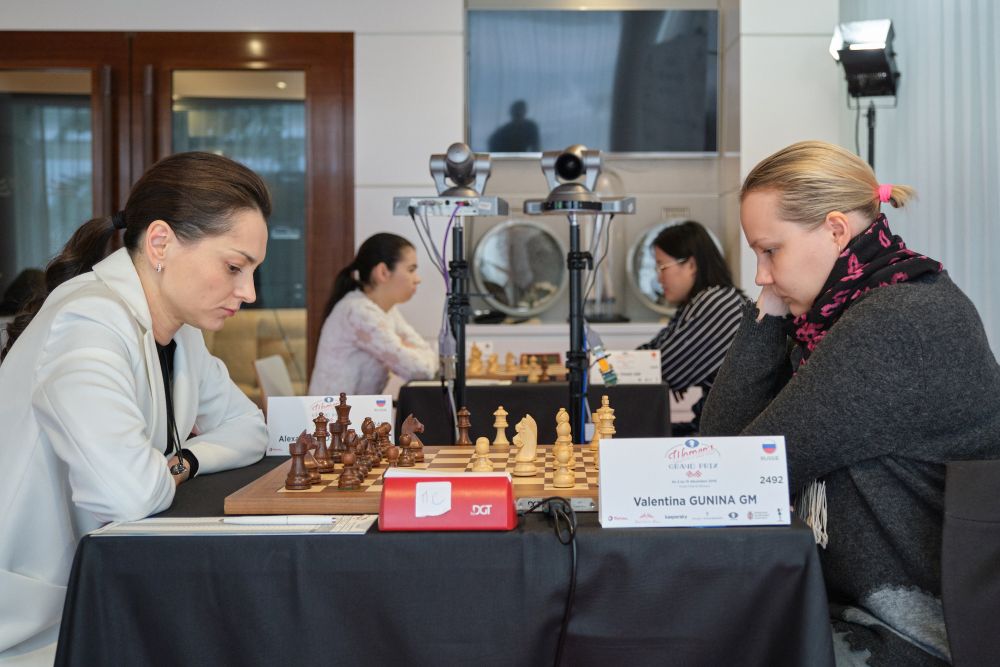
Gunina beats the in-form Kosteniuk | Photo: Karol Bartnik / FIDE
Goryachkina opted for the Ragozin Defense in QGD. Zhao Xue made an early theoretical mistake which made her unsure about what to do with the bishop.
The Ragozin is being played by every top grandmaster in the world - it is time you also add it to your repertoire to get interesting and dynamic positions against 1. d4!
GM Alejandro Ramirez analyses every single move that White can play once the Ragozin is reached, but due to several transpositional possibilities he always emphasises strategic goals to keep in mind.
In these variations, retreating the bishop means not only a loss of tempo but also a misplaced bishop.
For the lack of a better idea, Zhao moved her bishop again, thus causing her to lose valuable time.
Here black went with the slow 13...b6 which allowed white to gain total control on the queenside light squares. Slightly better alternative was to go with 13...dxc4 14.♗xc4 b5 where black at least gets to develop the bishop and have some kind of semblance to the position.
Things just started to go south after 17...♝c6 and white's advantage became insurmountable for black. Black should have gone with 17...♜e8 18.♕b5 ♝xa6 19.♕xa6 ♛f5 and this would have been much better for black than what happened in the game.
Goryachkina talks about her win (Russian audio) | Video: FIDE
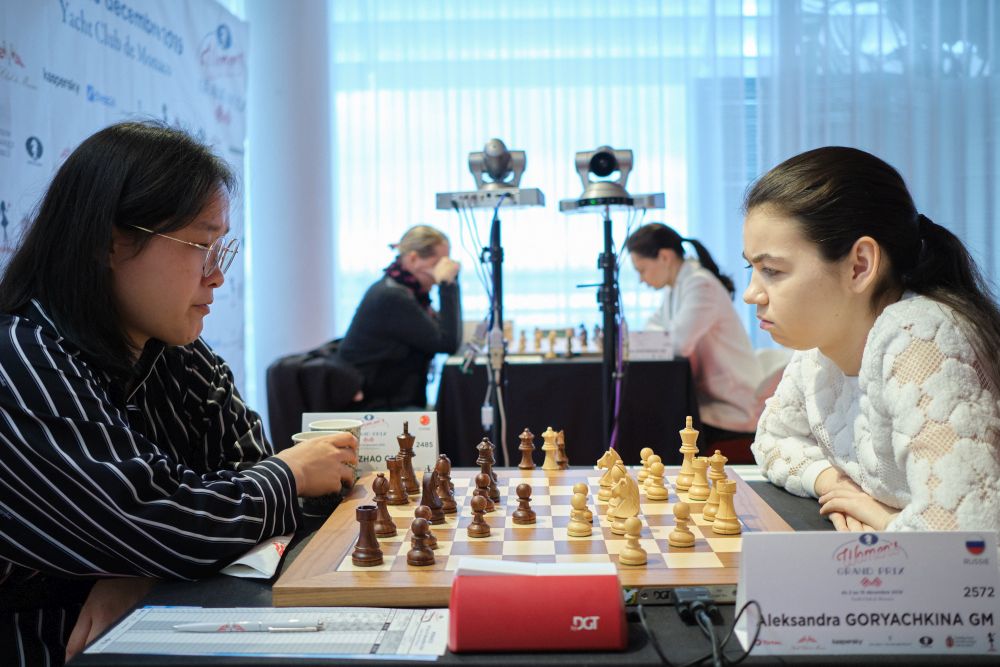
Goryachkina is back to her winning ways | Photo: Karol Bartnik / FIDE
Despite the major part of the game being seemingly equal, Paehtz slipped in the later part of the endgame against Dzagnidze.
White should have gone with 39.♕d7+ instead and not give up the d-file.
Instead of activating the king towards the centre, white went ahead with 41.♖c4 allowing black to grab pawns with 41...♜d2 and white started losing one pawn too many and eventually the game.
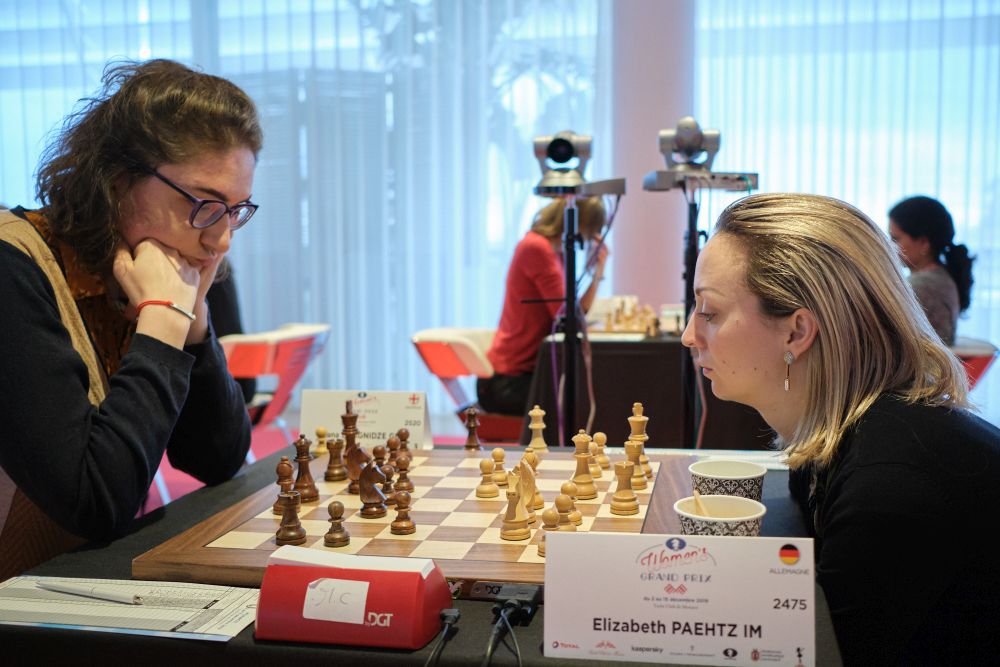
With a win against Paehtz, Nana moves to tied second place | Photo: Karol Bartnik / FIDE
The most interesting and complex game of the round was between Mariya Muzychuk and Kateryna Lagno. When asked about the game, Mariya said, "Well, yes I won my game but unfortunately I lost so much energy that I definitely need rest."
Lagno went with 18...b6 which was not the best idea. Instead, Black should have gone with 18...dxc5 19.♘xc5 c6 which is still better for white but not as worse for black as it happened in the game.
The most critical moment of the game was after black played 30...e4. The position is definitely advantageous for white but it looks a lot dangerous due to the king being in the line of fire. White needed to play precisely, however Mariya in the game gave her opponent a chance with 31.fxe4 which she later admitted that she missed the 31...f3, 32...♞xe4 idea.
White should have gone with 31.♘xe4 ♞xe4+ 32.♔g1 ♞g3 33.♖e1 and would be doing completely fine.
Lagno got one last opportunity after 36.♗e2, however she missed it and misplayed with 36...♞ge5+. Black could have salvaged the position with 36...♛g3+ 37.♖f3 ♞ge5+ 38.♔c2 ♛g6+ 39.♔b3 ♞xb6.
Mariya talks about the game | Video: FIDE
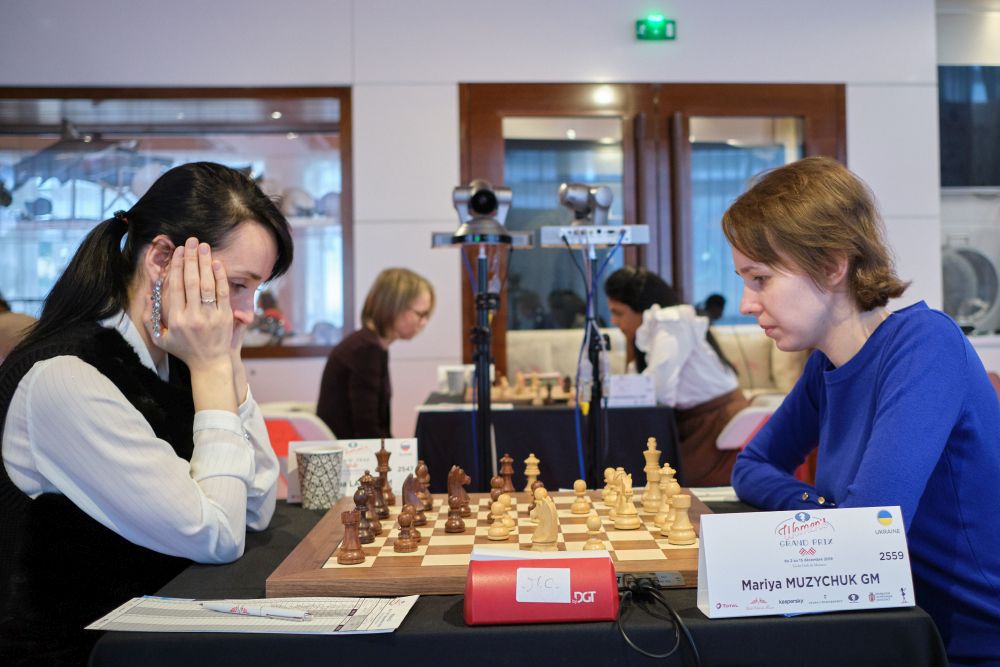
Mariya had the most exciting game of the round | Photo: Karol Bartnik / FIDE
In Semi-Slav, Cramling played a sideline 6.♘c3 instead of the mainline 6.♗d2.
Pieces got exchanged at regular intervals and a draw was agreed after 31 moves in an equal Opposite-colour bishop ending.

Harika won't be happy with this draw | Photo: Karol Bartnik / FIDE
The eleven-round event continues on Friday. The games start at 15:00 local time (16:00 CEST).
Live commentary by GM Iossif Dorfman and WGM Keti Tsatsalashvili along with GM Bartlomiej Heberla | Video: FIDE